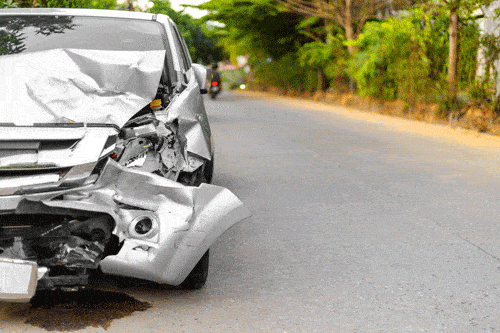One of the most dangerous situations a driver can face is to come upon a stretch of road where a crash has already occurred. There may be debris or disabled vehicles still in the roadway, injured people in need of assistance, emergency vehicles trying to get access, and more.
Approaching a crash scene requires extreme caution, but too often drivers aren’t paying attention or are in too much of a hurry, with tragic results. According to figures compiled by AAA, across the country, 46 emergency responders who were working in the roadway were struck and killed in 2020, including 17 law enforcement officers, 21 tow truck operators, one mobile mechanic, three safety service patrol operators, four firefighters, and one emergency medical services worker. This year 51 first responders have been struck and killed — and the year isn’t over yet.
Most people don’t think of tow truck drivers as first responders, but they are at as great or greater risk as others trying to clear the scene. Research from the National Institute for Occupational Safety and Health indicates that motor vehicle towing is one of the most dangerous jobs in the country, with a fatality rate more than 15 times the rate for all U.S. industries. And, of course, it isn’t just emergency responders who are in danger at crash scenes; good Samaritans, motorists involved in the crash, and bystanders are at risk, too. Since 2015 more than 1600 people have been struck and killed while outside a disabled vehicle.
In an effort to make crash scenes safer for everyone, all 50 states now have some version of a “move over” law, which requires drivers to change lanes and slow down when approaching stopped emergency vehicles. Under Colorado’s law, passed in response to the roadside death of Colorado State Trooper Cody Donahue in 2016, drivers are expected to move a lane away from a stationary emergency vehicle with lights flashing; if that is not possible, they must at least slow down to at least 20 miles per hour less than the posted speed limit. Failure to slow down or move over is a misdemeanor careless driving offense, which could escalate to a more serious charge if the driver’s actions result in injury or death to another person.
Unfortunately, many people don’t know about the requirements or heed them. A survey by AAA suggests that close to one in four people are unaware of the move-over law in their state. AAA has safety tips for drivers to help roadside workers, including:
- Avoid distractions and focus on the task of driving.
- Maintain enough distance between your vehicle and what you can see going on ahead of you to give yourself 20-30 seconds to respond to changing conditions by changing lanes and adjusting speed.
- When you see flashing lights or a disabled vehicle in the breakdown lane, slow down and prepare well in advance for a lane change. Allow others to merge into your lane when necessary.
- Allow extra space when following semi-trucks or large vehicles.
- Avoid sudden lane changes, especially on slick roads. Signal the change early and move over gradually.
- If you are unable to move over, slow down.
THE CAR ACCIDENT LAWYERS AT FDAZAR
For more than thirty years the attorneys at Franklin D. Azar & Associates have helped thousands of injured people obtain complete and timely compensation for their losses. Our proven track record and expertise have allowed us to grow into the largest personal-injury law firm in Colorado, with offices in Denver, Aurora, Thornton, Fort Collins, Greeley, Colorado Springs, and Pueblo. If you’ve been injured in a bus, car, truck, or motorcycle accident, you may be entitled to compensation. Please contact the car accident attorneys at FDAzar day or night for a free consultation and no-obligation evaluation of your case.



